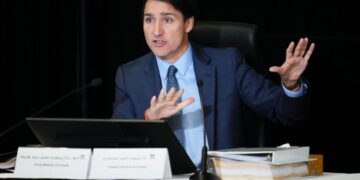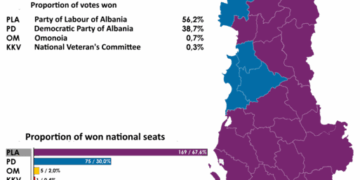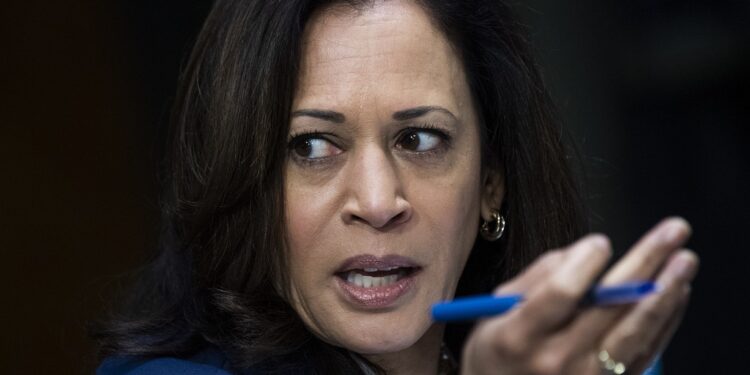The global financial markets experienced a significant shock on August 5, 2024, as fears of a potential US recession triggered a widespread sell-off across various asset classes. This article explores the causes and consequences of this market crash, its impact on different sectors, and the role of the Federal Reserve in stabilizing the situation.
The Catalyst: Weak US Economic Data
The market turmoil began following the release of unexpectedly weak US economic data for July, particularly in the jobs report. This data sparked concerns about the overall health of the US economy, which has an outsized influence on global financial markets. The unemployment rate saw an unexpected rise, leading to speculation about a potential recession.
Global Market Reaction
Stock Markets
The impact of these recession fears was felt across global stock markets:
- United States:
- The Dow Jones Industrial Average fell by approximately 1,000 points (2.7%).
- The Nasdaq Composite dropped 3.8%.
- The S&P 500 declined by 3.2%.
- Japan:
- The Nikkei 225 experienced its worst day since the “Black Monday” of 1987, plummeting 12.4%.
- This marked the largest one-day loss in points (4,451.28) in the index’s history.
- Other Asian Markets:
- Hong Kong’s Hang Seng index fell 0.2%.
- Australia’s S&P/ASX 200 dropped 12.8%.
Cryptocurrency Market
The cryptocurrency market was not immune to the global sell-off:
- Bitcoin, the world’s largest cryptocurrency by market capitalization, fell below $50,000 for the first time since February.
- At its lowest point, Bitcoin touched $48,126, representing a more than 10% drop in a single day.
Currency Markets
The market volatility also affected currency exchange rates:
- The Japanese yen strengthened against the US dollar, reaching 142.67 from 146.45 late Friday.
- This surge in the yen’s value negatively impacted Japanese exporters.
Underlying Factors
Several factors contributed to the market meltdown:
- Carry Trade Unwind: A significant driver of the sell-off was the unwinding of the dollar-yen carry trade. Investors who had borrowed cheaply in yen to invest in higher-yielding US assets were forced to liquidate positions following the Bank of Japan’s interest rate hike on July 31.
- Tech Stock Bubble: The AI-driven tech stock bubble showed signs of bursting, leading to a sharp decline in technology shares.
- Federal Reserve Policy Uncertainty: Market participants were uncertain about the Federal Reserve’s next moves regarding interest rates.
- Middle East Tensions: Escalating geopolitical tensions in the Middle East added to market nervousness.
The Role of the Federal Reserve
The market crash has intensified focus on the Federal Reserve’s monetary policy:
- Rate Cut Expectations: Prior to the crash, there was an 87% chance of a 25 basis-point cut in September. Following the meltdown, investors are now pricing in about 55 basis points of easing in September and 100 basis points by November.
- The “Fed Put”: There’s a widespread belief that the Federal Reserve has an unspoken mandate to ensure market stability, often referred to as the “Fed put.” This implies that the Fed will intervene with rate cuts or other measures when markets experience significant downturns.
- Structural Economic Issues: The US economy’s high degree of financialization means that sustained drops in asset prices could have catastrophic effects beyond just the financial markets.
Market Responses and Expert Opinions
While the market reaction was severe, some analysts believe it may be overblown:
- Gregory Daco, EY chief economist, stated that the market panic appears disproportionate.
- Joseph Brusuelas, chief economist at RSM US, described the global selloff as a “classic market panic.”
- Jim Smigiel, chief investment officer at SEI, suggested that the selloff is overdone.
Political Implications
The market crash has also entered the political arena, with J.D. Vance, Donald Trump’s running mate in the upcoming presidential election, criticizing Vice President Kamala Harris’s ability to handle the crisis.

Looking Ahead
As markets continue to grapple with uncertainty, several key points emerge:
- The Federal Reserve’s response will be crucial in shaping market sentiment and economic trajectory.
- The interconnectedness of global markets means that instability in one region can quickly spread to others.
- The role of speculative trading and leveraged positions in amplifying market movements has become increasingly apparent.
- The long-term implications of continued market interventions by central banks remain a subject of debate among economists and policymakers.
As the situation continues to evolve, investors, policymakers, and citizens alike will be closely watching for signs of stabilization or further volatility in the global financial markets.
Long-term Implications and Potential Solutions
The still developing 2024 market crash serves as a wake-up call, highlighting the need to address The Great Divide between paper and physical economies:
- Economic Resilience: Policymakers must focus on building resilience in the physical economy, including investments in infrastructure, education, and innovation.
- Financial Regulation: Stricter regulation of speculative financial activities, including the carry trade and leveraged investing, may help reduce market volatility and align the paper economy more closely with economic fundamentals.
- Balanced Monetary Policy: Central banks, including the Federal Reserve, need to consider the impacts of their policies on both the paper and physical economies, potentially accepting more volatility in asset prices to ensure long-term economic stability.
- Addressing Inequality: Policies that promote broader asset ownership and support wage growth in the physical economy could help bridge the gap between the two economic realms.
Conclusion: A Turning Point?
The August 2024 market crash has laid bare the consequences of allowing The Great Divide between paper and physical economies to widen unchecked. As policymakers, business leaders, and citizens grapple with the fallout, there’s an opportunity to reassess economic priorities and work towards a more balanced and resilient economic system.
The challenge ahead is significant: how to maintain the dynamism and innovation often associated with the paper economy while ensuring that the benefits are more broadly shared and that the physical economy receives the attention and investment it needs. The response to this crisis may well determine whether the global economy can bridge The Great Divide or if the gap will continue to grow, with potentially severe consequences for economic stability and social cohesion.

































